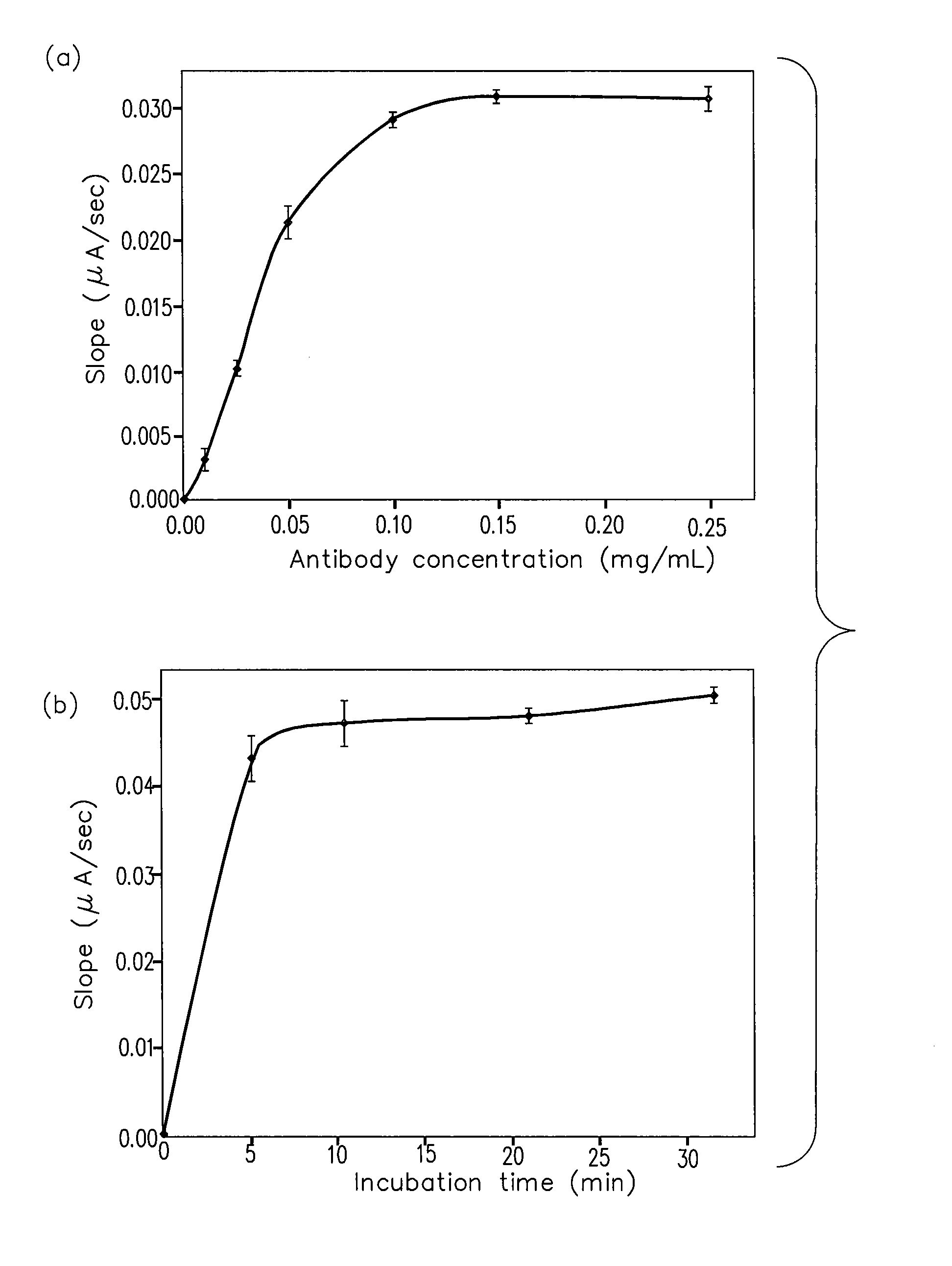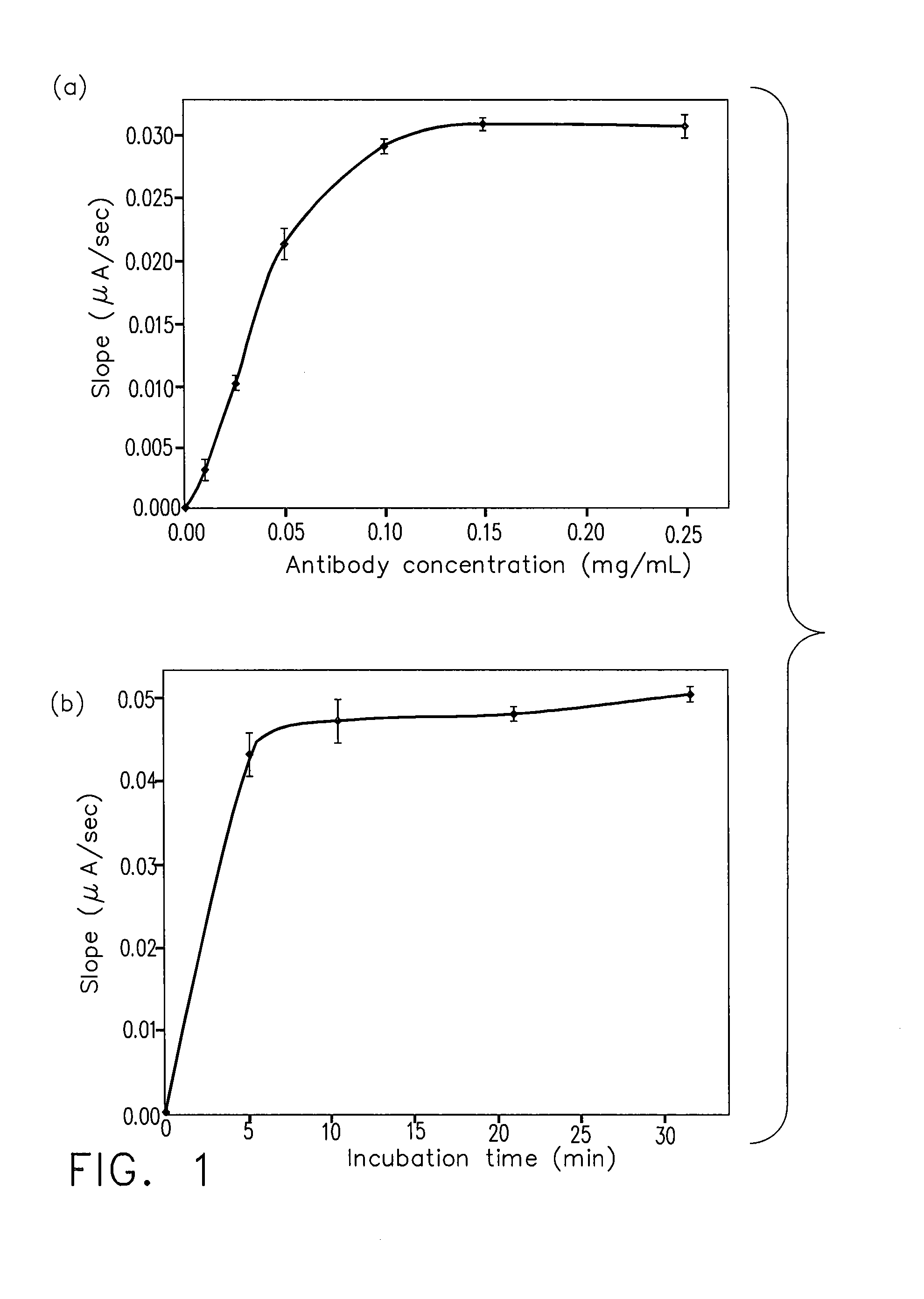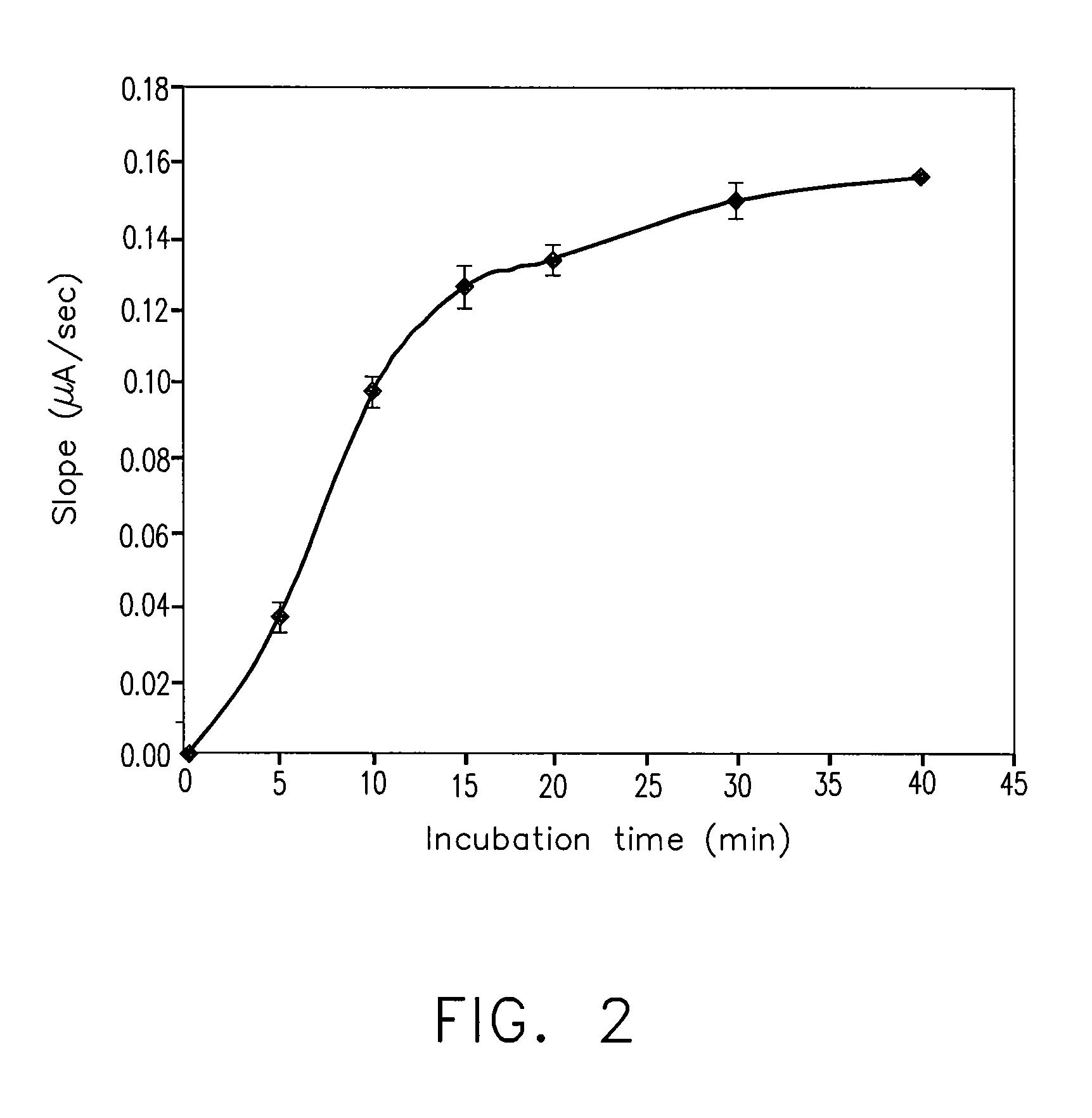Determination of viable microorganisms using coated paramagnetic beads
a paramagnetic beads and microorganism technology, applied in the field of detection of live microorganisms, can solve the problems of time-consuming, inconvenient, and multiple handling steps for traditional methods of enumerating i>e. coli /i>, and achieve rapid and accurate detection and indicating, rapid and accurate quantification and indicating
- Summary
- Abstract
- Description
- Claims
- Application Information
AI Technical Summary
Benefits of technology
Problems solved by technology
Method used
Image
Examples
example 1
[0146]Detecting and enumerating fecal coliforms, especially Escherichia coli, as indicators of fecal contamination, are essential for the quality control of supplied and recreational waters. We have developed a sensitive, inexpensive and small volume amperometric detection method for E. coli β-galactosidase by bead-based immunoassay. The technique uses biotin-labeled capture antibodies (Ab) immobilized on paramagnetic microbeads that have been functionalized with streptavidin (bead˜Ab). The bead˜Ab conjugate captures E. coli from solution. The captured E. coli is incubated in Luria Bertani (LB) broth medium with the added inducer isopropyl β-D-thiogalactopyranoside (IPTG). The induced β-galactosidase converts p-aminophenyl β-D-galactopyranoside (PAPG) into the reduced form of p-aminophenol (PAP), which is measured by amperometry using a 3 mm Au rotating disc electrode. A good linear correlation (R2=0.989) was obtained between log cfu / ml E. coli and the time necessary for the product...
example 2
[0171]A rapid and convenient assay system was developed to detect viable Escherichia coli in water. The target bacteria were recovered from solution by immunomagnetic separation and incubated in tryptic soy broth (TSB) with isopropyl-β-D-thiogalactopyranoside (IPTG), which induces β-galactosidase. Lysozyme was used to lyse E. coli cells and release the β-galactosidase. β-galactosidase converted 4-methylumbelliferyl-β-D-galactoside (MUG) to 4-methylumbelliferone (4-MU), which was measured by fluorescence spectrophotometer using excitation and emission wavelengths of 355 and 460 nm, respectively. The activities of the released enzymes were calculated using calibration graph of 4-MU fluorescence intensities, and a good linear correlation (R2=0.99) was obtained between log cfu mL−1 and log β-galactosidase activity. Detection and enumeration of E. coli was demonstrated with a detection range of 4×101 to 4×106 cfu mL−1 and an incubation time of 120 min. The developed immunoassay did not r...
PUM
 Login to View More
Login to View More Abstract
Description
Claims
Application Information
 Login to View More
Login to View More - R&D
- Intellectual Property
- Life Sciences
- Materials
- Tech Scout
- Unparalleled Data Quality
- Higher Quality Content
- 60% Fewer Hallucinations
Browse by: Latest US Patents, China's latest patents, Technical Efficacy Thesaurus, Application Domain, Technology Topic, Popular Technical Reports.
© 2025 PatSnap. All rights reserved.Legal|Privacy policy|Modern Slavery Act Transparency Statement|Sitemap|About US| Contact US: help@patsnap.com



